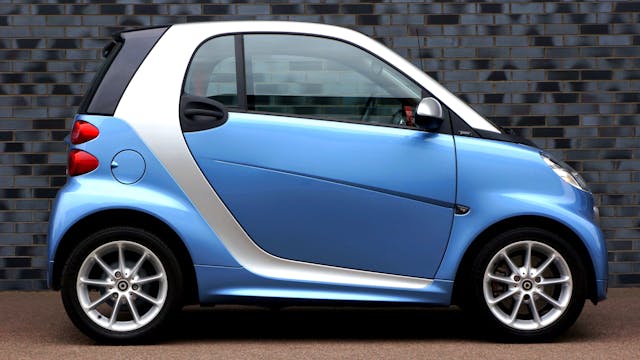Many people rely on seat belts to protect them in a crash. However, a few factors can affect how effective and comfortable they are.
In one study, truck drivers reported that their seat belts are uncomfortable and do not always fit properly. The good news is that these drivers can improve their comfort while wearing a safety belt.
Contents
Improved Posture
Your posture improves when you are seated correctly in the driver’s seat. The position also helps your hands, eyes, and limbs work more effectively to respond as road conditions change. Time Magazine reported that drivers sitting in the correct position for extended periods experience fewer health issues than those with poor posture.
How you sit, adjust your seat, and use your vehicle’s mirrors can significantly impact your driving experience. You can also make adjustments to reduce stress on your body, such as stretching while you are sitting at stoplights.
Many people have their seats positioned too low in the vehicle. The ideal seat angle is 100 to 110 degrees, which allows your back to contact the seat cushion fully and prevents a slouchy posture. The seat should also be high enough to allow you to reach the pedals easily and have a slight bend in your right knee.
Similarly, you should avoid holding the steering wheel at the top of your shoulders. Instead, you should have it near four and eight on the clock, which creates a more natural posture and reduces strain on your neck and shoulder muscles. Taking breaks while driving long distances and stretching during those trips is also essential. Doing so will minimize discomfort, fatigue, and the aches and pains that may linger after parking.
Reduced Injuries
The main benefit of seat belts is that they protect drivers and passengers from serious injury during crashes. This is because seat belts prevent occupants from being ejected or hitting other vehicle parts during a collision. They also provide support during a rollover accident.
Seat belts are critical when a driver is going to be traveling at high speeds. In a rear-impact collision at 60 mph, for instance, an unbelted front-seat passenger has a risk of death that is 3.5 times higher than a belted passenger.
Studies have shown that seat belt use reduces serious injuries by about half. Several states have enacted laws requiring all front-seat occupants to wear a seat belt. Publicized enforcement campaigns such as “Click It or Ticket” have successfully increased seat belt compliance.
A study involving part-time belt users found that reminders and a speed-limiting interlock that held the car to 15 mph during non belt driving effectively increased belt use, so fixing a seatbelt that won’t retract is very important. However, some drivers could circumvent the interlocks by sitting on them or buckling them behind their backs.
Many people avoid wearing seat belts because they believe the risks are overstated. Still, seat belts can significantly enhance your driving experience by preventing severe crash injuries. Alertness
The seat belts secure you to the car so that if the vehicle stops or crashes, you slow down with it rather than hitting whatever is in front of it. This reduces the impact of a second collision and helps you ride down the crash, further decreasing injuries.
A seat belt also prevents you from being thrown from the car. If you are unrestrained and the vehicle is involved in a sudden maneuver, like emergency braking, you could be thrown forward over the steering wheel or dashboard. The seatbelt holds you in your seat, preventing this from happening.
In addition, seat belts help you drive more alertly. When unrestrained, you tend to focus more on the road ahead and what is coming up behind you. This can lead to distracted driving and, as a result, more accidents. Seatbelts reduce this risk by letting you focus on the road ahead while ensuring that you control your vehicle.
Despite the apparent benefits of using seat belts, a significant proportion of people still do not use them. This is partly because the observed front-seat belt usage rate has risen only slightly since the introduction of mandatory seatbelt laws in 1983 and mainly because most people who die in car crashes are not wearing their seatbelts (Mackay, 1997; Partyka, 1989). New technologies that make it easier to buckle up may increase belt use. A study by the IIHS found that a seat belt interlock, which limits vehicle function if the driver or front-seat passenger is not wearing their seat belt, increased belt use by 33 percent.
Enhanced Safety
Seat belts are one of the most effective ways to reduce fatal injuries in a crash. However, millions of people still do not buckle up on every trip. Those who do not wear seat belts are more likely to die or suffer incapacitating injuries than those who do (Cohen & Einav, 2015).
The first modern lap belt was invented in 1955 by Volvo engineer Nils Bohlin. His open patent allowed other manufacturers to implement his game-changing design. 1968, the Federal Motor Vehicle Safety Standards were passed, requiring car lap and shoulder belts.
Modern seat belts operate on spring-loaded reels with a quick release, usually mounted on the shoulder belt part in the door jamb. They will pay out, or retract, if you reach down to grab something on the floor of your car or if you are moving at a slow rate. They will also lock if you suddenly accelerate or decelerate.
Many state laws now mandate belt use for all drivers and passengers. Publicized enforcement campaigns like “Click It or Ticket” help maintain high compliance levels. In addition, a recent study involving part-time belt users found that persistent audible reminders increased belt use by 33 percent. Other research has shown that speed-limiting interlocks can increase belt usage even more, but those systems have yet to be widely adopted.



